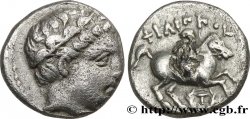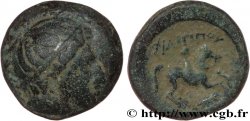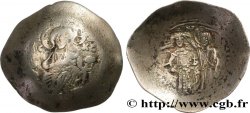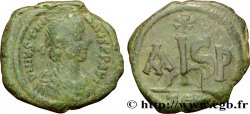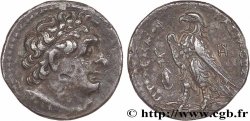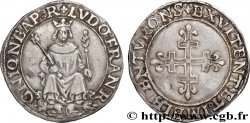v32_0023 - MACEDONIA - REINO DE MACEDONIA - FELIPE III ARRIDAIOS Tétradrachme
MONNAIES 32 (2007)
Precio de inicio : 950.00 €
Valoración : 1 500.00 €
Precio realizado : 1 120.00 €
Número de ofertas : 2
Oferta más alta : 1 200.00 €
Precio de inicio : 950.00 €
Valoración : 1 500.00 €
Precio realizado : 1 120.00 €
Número de ofertas : 2
Oferta más alta : 1 200.00 €
Tipo : Tétradrachme
Fecha: 323/322-316/315 AC
Nombre del taller / ciudad: Macédoine, Pella
Metal: plata
Diámetro: 24,5 mm
Eje de acuñación: 6 h.
Peso: 14,24 g.
Grado de rareza: R1
Comentarios sobre el estado de conservación:
Exemplaire de qualité exceptionnelle pour ce type sur un flan parfaitement centré des deux côtés. Portrait de toute beauté. Revers avec le grènetis visible. Pas d’usure au revers, mais style un peu pauvre. Magnifique patine de médaillier avec des reflets mordorés
N° en los catálogos de referencia :
Pedigrí:
Cet exemplaire provient de la vente Lanz 125, 28 novembre 2005, n° 227
Anverso
Titulatura del anverso: ANÉPIGRAPHE.
Descripción del anverso: Tête laurée de Zeus à droite.
Reverso
Descripción del reverso: Cavalier au pas à droite, tenant une palme de la main droite ; le cheval lève l'antérieur à droite ; sous le cheval, entre les antérieurs, une couronne fermée.
Leyenda del reverso: FILIP-POU
Comentario
Nouveau groupe pour l’atelier de Pella avec la couronne entre les antérieurs du cheval. Ce symbole relativement rare a été utilisé par l’atelier de Pella sous le règne d’Alexandre III (Le Rider, p. 51, n° 384-387, pl. 16) et à Amphipolis sous Philippe III associé à différentes lettres (Le Rider, pl. 45/22 à 45/28). Même coin de droit que l’exemplaire de la collection Löbbecke conservé à Berlin, n° 519, pl. 22 (A/ 277) associé au foudre et qui ne semblait pas associé à d’autres tétradrachmes. Le coin de revers est donc complètement nouveau et semble pouvoir être attribué à Philippe III en raison de la liaison de coin de droit intergroupe (foudre et couronne). Le revers est légèrement stylisé, le cheval grêle, le cavalier mince avec de grands rubans à la couronne, une palme mince et schématique. Les lettres sont toutes bouletées et l’omicron est figuré sous la forme d’un point.
New group for the Pella mint with the crown between the horse's forelegs. This relatively rare symbol was used by the Pella mint during the reign of Alexander III (The Rider, p. 51, no. 384-387, pl. 16) and at Amphipolis under Philip III associated with different letters (The Rider, pl. 45/22 to 45/28). Same obverse die as the copy from the Löbbecke collection in Berlin, no. 519, pl. 22 (A/ 277) associated with the thunderbolt and which did not seem to be associated with other tetradrachms. The reverse die is therefore completely new and seems to be attributable to Philip III because of the intergroup obverse die connection (thunderbolt and crown). The reverse is slightly stylized, the horse slender, the rider slim with large ribbons to the crown, a thin and schematic palm. The letters are all rounded and the omicron is represented in the form of a point
New group for the Pella mint with the crown between the horse's forelegs. This relatively rare symbol was used by the Pella mint during the reign of Alexander III (The Rider, p. 51, no. 384-387, pl. 16) and at Amphipolis under Philip III associated with different letters (The Rider, pl. 45/22 to 45/28). Same obverse die as the copy from the Löbbecke collection in Berlin, no. 519, pl. 22 (A/ 277) associated with the thunderbolt and which did not seem to be associated with other tetradrachms. The reverse die is therefore completely new and seems to be attributable to Philip III because of the intergroup obverse die connection (thunderbolt and crown). The reverse is slightly stylized, the horse slender, the rider slim with large ribbons to the crown, a thin and schematic palm. The letters are all rounded and the omicron is represented in the form of a point







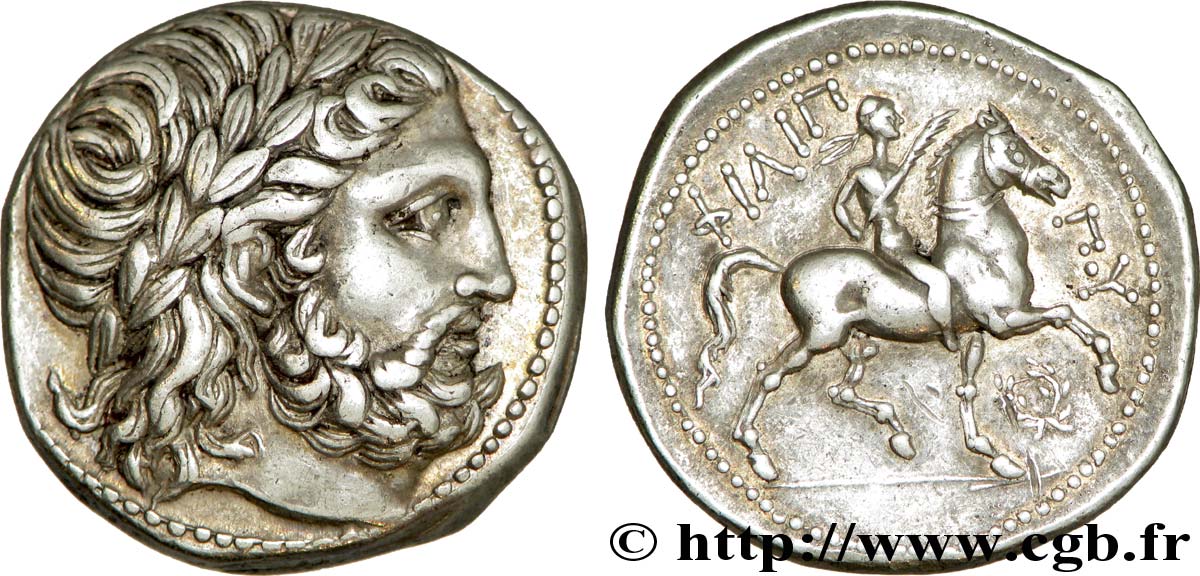
 Informar de un error
Informar de un error Imprimir la página
Imprimir la página Comparte mi selección
Comparte mi selección Haz una pregunta
Haz una pregunta Consignar / vender
Consignar / vender
 Descriptivo
Descriptivo
